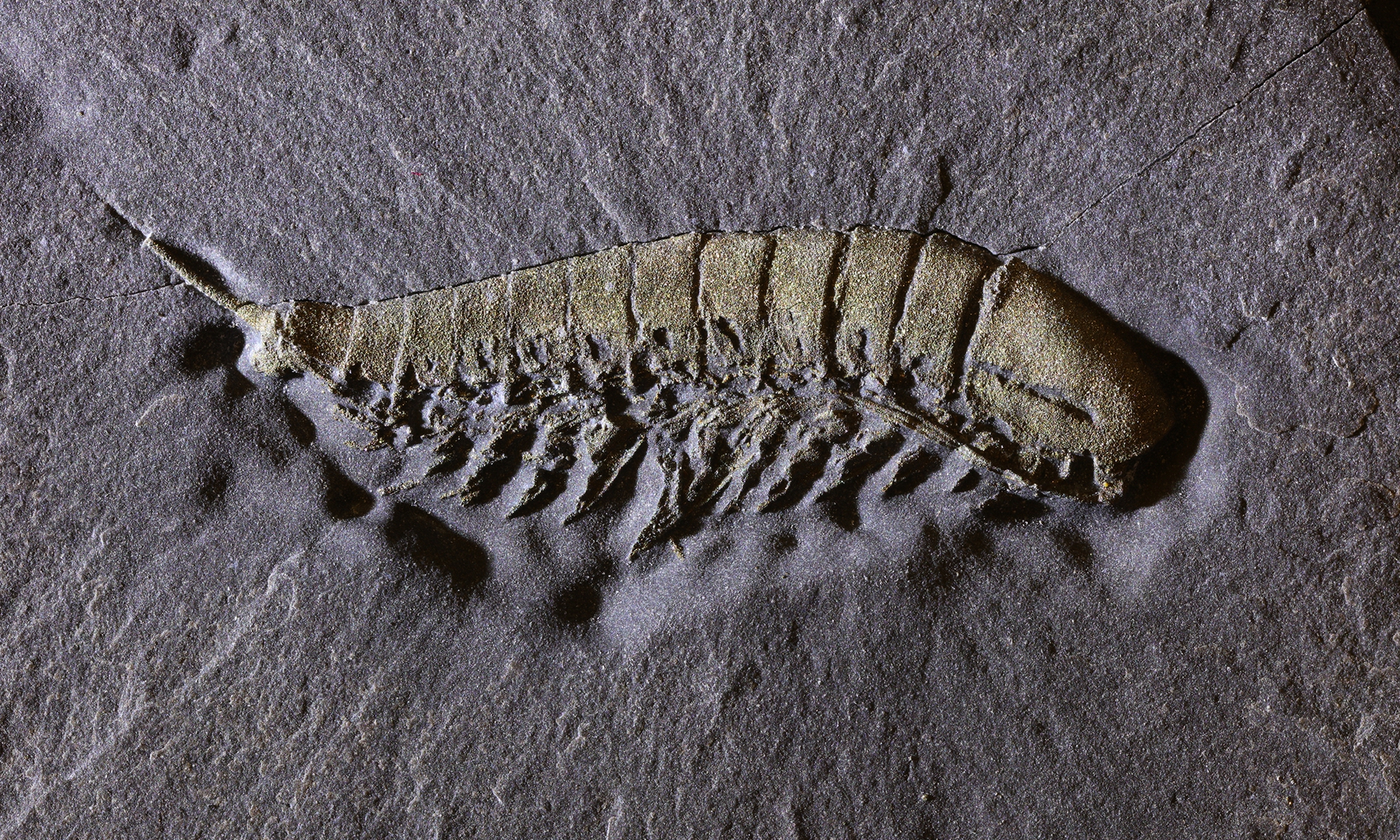
Lomankus edgecombei, a new arthropod species from the Ordovician period Photo: Courtesy of Dr. Luke Parry at the University of Oxford
Lomankus edgecombei, a new arthropod species from the Ordovician has recently been discovered thanks to an international project featuring scientists from China, the UK and the US. The new species is likely related to spiders and scorpions of today.
Unlike other fossils that appear plain-looking,
Lomankus edgecombei was discovered wearing a "golden armor."
The golden covering is believed to have formed because creatures of this biota lived in a relatively low-oxygen environment, and their carcasses were buried in sediment that was combined with pyrite, a type of brassy-yellow mineral also known as "fool's gold" through a process of mineralization.
The creature has inhabited in the ocean floor for the past 450 million years. Although the piece was discovered in the US, a Chinese team of researchers from Yunnan University has contributed by scanning the fossil specimens with a micro-CT scanner, and rendering high-resolution 3D models derived from the CT data.
Another major highlight of the project - identifying the creature's soft tissue such as the appendages - was also conducted by the team using 3D virtual dissection techniques.
Liu Yu, one of the leading scientists of the project, told the Global Times that this research holds the value of showing the applicability of "micro-CT scanning, computer 3D modelling and virtual dissection technologies" in palaeontology worldwide.
He also emphasized that previous paleontological research has relied heavily on the discovery of new fossils, and due to technological limitations, much information preserved within fossils could not be extracted. The development and application of new technologies have largely addressed these issues, allowing for the extraction of important information from limited fossil materials as comprehensively and accurately as possible.
"With the strong national technological support, Yunnan Province and the university, some niche research palaeontological directions develop rapidly in the country, and its influence is extending to the international academic fields," Liu told the Global Times. Other than Yunnan University, scientists of the University of Oxford, Yale University and the University of California, Berkeley have also taken part in this project.
"These remarkable fossils show how rapid delicate anatomical features in pyrite can be replaced before they decay," Liu said, adding that it is the "key evidence of the development of life in the oceans 450 million years ago."
Beyond the fossil's peculiar appearance, the new discovery holds great scientific value as it sheds lights on the early arthropod evolution.
Lomankus edgecombei belongs to a special arthropod group called "megacheirans." Prior to the research, this group of arthropods was widely believed to have survived during the Cambrian Period but have gone extinct by the Ordovician Period. Newly unveiled details from the current project also illustrate the evolution of head appendages in arthropods.
"Today, there are more species of arthropods than any other group of animals on Earth. Part of the key to this success lies in their highly adaptable head and their appendages, which have adapted to various challenges like a biological Swiss army knife," said Luke Parry, the research's lead and an Associate Professor at the University of Oxford. Parry also addressed that,
Lomankus edgecombei shows that the megacheirans continuously "diversified and evolved" after the Cambrian Period.
The study was published on the acclaimed journal Current Biology on Tuesday. Prior to the publication, in August, Yunnan University's paleontological team led by Liu made a presentation at the 37th International Geological Conference in Busan, South Korea.
The team's presentation has demonstrated Chinese scientists' continuous efforts and progress made in tackling the research topics, such as the evolution of the early arthropod's head organization and their limb differentiation.
"We are planning on a new project on non-destructive 3D research of arthropod fossils. This project is going to collaborate with scientific teams from the UK, the US and Germany," Liu told the Global Times.




